

Finn's SunPower Panels Review & Verdict
Finn Peacock has been a Chartered Electrical Engineer since 1998, and is ex-CSIRO
If you want solar panels likely to outlast others, spend the money on SunPower. The thick copper backing on their cells makes them tough as hell.
But with most panels now coming with a 25 or 30 product year warranty, you have to really value SunPower's 40-year warranty (and be confident you'll be able to call on it for four decades) to justify the extra expense for these Rolls-Royce of solar panels.
SunPower Australia sells Maxeon Solar panels and is independent of SunPower USA, which has filed for bankruptcy. If you have SunPower panels your warranties are unaffected.
Another way of thinking about SunPower solar panels is: they are so well made, the likelihood of ever calling on the warranty (in the first couple of decades at least) is low.
SunPower Panels: Pros & Cons
- Premium product with higher than average efficiency
- Very long warranties available
- Long established
- Well-regarded relationship and support with Enphase
- Expense
- Efficiency margin has been eroded, the whole industry has caught up significantly
- Who's going to honour the warranty at 40 years?
About SunPower
SunPower solar panels are produced by Maxeon Solar Technologies. This company has its headquarters in Singapore and manufacturing facilities in Malaysia, Mexico, and the Philippines.
There are two types of SunPower panels:
- SunPower Performance: These panels are up to 21.1% efficient, with 25-year product and performance warranties.
- SunPower Maxeon: These have an efficiency of up to 23%. This makes them one of the most efficient solar panels available. Their 40-year product and performance warranties are the longest around.
SunPower panels have been used in Australia for decades and have proven to be very reliable. They're also well-supported here. Because of this, Solarquotes has no problem recommending them.
If you're after the longest panel warranties around, then SunPower Maxeon are the way to go. But at the moment it's not clear if Maxeon Solar Technologies will still be around in the future to honour them.
Company History
SunPower was founded in 1985 in the United States by Richard Swanson. In 2011 a large portion of it was purchased by TotalEnergy, a French oil company that totally wanted to diversify out of oil. In August 2020 the solar panel manufacturing side of the business was separated from the US installation side and became a separate company -- Maxeon Solar Technologies. While no longer called SunPower, they still produce SunPower brand panels. This company is responsible for the warranties of any existing SunPower panels you may have.
There is still a company called SunPower in the United States, but they don't manufacture panels and have no presence in Australia. So long as you don't confuse them with Maxeon Solar Technologies and their SunPower brand panels, they can be safely ignored.
While the company name has changed, SunPower panels have been around for nearly 40 years. This is far longer than most solar panel manufacturers and almost as long as Maxeon's warranties last.
SunPower Production
Maxeon Solar Technologies has its own panel manufacturing capacity, but most SunPower Performance panels are produced by an entirely different company as part of a joint venture. All SunPower Performance panels sold in Australia are likely to have been produced by Huansheng JV in China.
In 2023 Maxeon Solar Technologies had enough panel production capacity of their own to potentially manufacture over 2.5 gigawatts (GW) of solar panels per year -- around 0.7GW of Performance and 1.8GW Maxeon. Of the Maxeon capacity, close to 0.5GW was for their latest Maxeon 6 panels.
In 2022 they made 2.348GW of panels. That's a lot, but these days not enough to make them a large manufacturer. Longi Solar is the world's largest solar company at the moment and in 2022 they produced 20 times as much.
Huansheng JV makes the majority of SunPower Performance panels. At the end of 2022 had the capacity to manufacture up to 12GW per year and this may reach 20GW by the end of 2023. So their production of SunPower Performance panels dwarfs Maxeon Solar Technologies output.
Employees
At the start of 2023, Maxeon Solar Technologies had the full-time equivalent of 5,344 employees and 28 were in Australia.
Manufacturing Locations
According to their 2022 annual report, Maxeon Solar Technologies has factories in three countries:
- Malaysia: 1 solar manufacturing facility
- Philippines: 1 solar cell manufacturing facility and 1 cell manufacturing support and storage facility.
- Mexico: 2 solar panel assembly factories
The Malaysian factory produces solar cells and was upgraded in the first half of 2023 to produce 1.8 GW per year. It's in the city of Malacca where -- provided you avoid the hot stuff -- you can get great food even though in Dutch Malacca means "bad delicious". (Now I think about it, that's actually a pretty good description of the place...)
The Philippines manufacturing plant is in the city of Binan, south of Manilla. Binan isn't famous for any specific food, but you'll have no problem getting stuff with bananas in it there.
The Mexican facilities produce both Performance and Maxeon panels. Expansions at their Baja Mexico plant were completed in June 2023 and allow it to produce up to 1.8GW of Performance panels annually. We generally think of California as being part of the United States, but this part of Mexico is also called California. If a salesperson tells you Maxeon panels are made in California without mentioning it's the Mexican part or just says "North America" that's evidence they're not a trustworthy person.
Maxeon Solar Technologies has also announced they'll spend over USD$1 billion on a factory in New Mexico outside of Albuquerque. If it goes ahead, it will be completed in 2025 and produce solar cells and SunPower Performance panels. It will have 3GW of production capacity -- or maybe 4.5GW if they decide demand will be high enough.
Huansheng JV, the Chinese company that produces most SunPower Performance panels, appears to have its headquarters in Yixing and may have manufacturing facilities in Tianjin. Yixing is a "small" city of one million, while Tianjin has 13 million -- half of Australia's population.
Performance Panels
SunPower Performance panels are different from most, as they are shingle panels. These days it's common to cut solar cells in half to make half-cut panels. But shingle panels go further and cells are cut into four or five strips that are placed on panels so they slightly overlap each other. This hides the electrical contacts under the overlap so they don't block sunlight from hitting the cells.
SunPower Performance panel efficiency ranges from 18.9% to 21.1%. While that's not bad, it's not exceptional these days.
While not currently shown on their Australian site, Maxeon Solar Technologies produces bifacial Performance panels that are approved for use in Australia. These can take advantage of light that hits both the front and rear of the panel. This can help when they're mounted in tilt frames but doesn't give an advantage to panels installed flat on normal roofs.
Maxeon Panels
Maxeon panels currently range from Maxeon 3 to Maxeon 6, with higher numbers belonging to the newer and more advanced versions. A Maxeon 7 panel is planned for future production.
The solar cells in Maxeon panels are unique in having a copper backing that contributes to their durability. They also want you to know they have no grid lines on the surface of the cells, which is a helpful but not exceptional feature.
Maxeon panels are good at resisting the effects of partial shade. When a panel is partially shaded it generally doesn't just lose output from the shaded cells but unshaded ones can have their output reduced as well. This effect is minimized in SunPower Maxeon panels, so they can be a good choice in locations where they'll suffer partial shading for a significant part of the day.
Efficiency ranges from 20.7% for some Maxeon 3 panels up to an excellent 23% for the most efficient Maxeon 6 panel. While they used to lead the world in efficiency, other manufacturers are now catching up. I'm writing this in September 2023 and if you're after 23% efficiency you currently have a choice between SunPower Maxeon 6 and Longi Hi-MO6 "Scientist" panels.
Heat Resistance
High temperatures lower solar panel efficiency. For SunPower Performance panels it declines by 0.34% for each degree over 25°C. This means they provide 6.8% less power at 45°C than at 25°C. While this loss isn't good, it is slightly less than most panels on the market.
Maxeon panels can have excellent heat resistance. While it varies by panel, for their Maxeon 6 panels it's 0.29% per degree over 25°C. So at 45°C they would produce 5.8% less power than at 25°C. This may make it sound as though 1 kilowatt of the most heat-resistant Maxeon panel would produce 1% more energy than 1 kilowatt of Performance panels, but over a year -- thanks to low temperatures in winter and early in the morning -- the actual difference won't be that large.
2 Warranties
Solar panels come with two warranties:
- Product warranties that cover faults and defects in manufacturing and materials.
- Performance warranties that specify how much they are permitted to decline in capacity each year.
Product and performance warranties are the same length for SunPower panels, which helps keep things simple.
Product Warranties
SunPower Performance panels come with a 25-year product warranty. While not exceptional these days, it's still a long time. SunPower Maxeon panels do even better and have a 40-year product warranty -- the longest of any solar panel.
Performance Warranties
The performance warranty of SunPower Performance panels promises they'll lose no more than 2% of capacity in their first year and no more than 0.45% each subsequent year. So at the end of their 25-year performance warranty, they'll still have a minimum of 87.2% of their original capacity. This is better than most panels on the market.
SunPower Maxeon panels have, by far, the best performance warranty I know of. It lasts for 40 years, rather than the 25 years most panels have, and allows a maximum of 2% capacity loss in the first year and no more than 0.25% in subsequent years. This means after 25 years a Maxeon panel will still have a minimum of 92% of its original capacity and after 40 years it will still have at least 88.25%.
According to Maxeon Solar Technologies, only 1 in 20,000 Maxeon panels have been returned under warranty. This suggests they are highly reliable. But note it is possible for companies to massage these numbers to make them appear better than they are.
Warranty Claims -- Contact Your Installer First
Ideally, you'll never have problems with SunPower panels. But if an issue arises, you should first contact the installer who provided them. If they're no longer around then you can contact Maxeon Solar Technologies directly.
Maxeon Solar Technologies: 1800 786 769
AC Panels
There are SunPower panels, both Performance and Maxeon, that come with Enphase microinverters already attached. These are called AC panels and they simplify the installation of a microinverter solar system.
Lightweight Panels Are Coming... Maybe
SunPower have promised to make lightweight and flexible Maxeon panels called Maxeon Air that can be used on roofs that can't take the weight of normal panels. But while they were announced over 2 years ago, so far they've been a no-show.
SunPower Reserve Home Battery
Maxeon Solar Technologies markets a battery under the SunPower brand called the SunPower Reserve. Its details are on our Battery Comparison Table.
Financial Health
If you have 25 or 40-year warranties on your solar panels, you'll want the manufacturer to be around long-term so they can honour them. The installer who provided them has an obligation to provide support if a panel manufacturer goes under, but installers can disappear as well and the chance goes up if the manufacturer of many of the panels they've installed goes bust.
The bad news is the financial health of Maxeon Solar Technologies isn't nearly as good as it could be, so it's not clear they'll still be around in the future. At the start of 2023, they had a debt of USD$459 million. In September 2023 their market capitalization -- the value of shares traded on the stockmarket -- was only USD$750 million. The company owns considerable intellectual capital in the form of patents, but these have been put up as collateral for loans. Their 2022 annual report says:
"The existence of substantial indebtedness could adversely affect our business, financial condition, and results of operations, as well as our ability to meet our payment obligations under our debt commitments."
According to their annual report, they had significant losses over the past several years:
- 2020: Net loss of USD$143 million
- 2021: Net loss of USD$255 million
- 2022: Net loss of USD$267 million
As solar panel prices have fallen dramatically in 2023 Maxeon Solar Technology's losses may be even higher this year. After the 2023 second quarter they announced 46% year-on-year revenue growth, but this is not inconsistent with running a loss. Because I'm not an accountant I can't say how serious their financial situation is but, to my untrained eye, it doesn't look good.
I'm not saying don't buy SunPower panels because the manufacturer's financial situation doesn't look good. But I will advise against buying them if you're not willing to take on the risk that their warranty support will disappear.
Executive compensation
Despite Maxeon Solar Technologies racking up losses lately, in 2022 the top seven executives shared USD$9.8 million in compensation between them. An average of over $2 million Australian each.
A Vote Of Confidence
SunPower panels are very popular with Australian installers. In the SolarQuotes Installers' Choice Awards, SunPower was voted second in the best solar panels in 2023 category and also achieved second place for best after-sales support. For the 2024 edition of these awards, they won second place again in the best solar panels in 2024 category, and achieved third place for best after-sales support.
SunPower has 16 solar panels in our database
Filter by:
SunPower Reviews (1114)
Show Most Relevant reviews from All time
- 5 star 993
- 4 star 108
- 3 star 11
- 2 star 0
- 1 star 2
View Timeline
12 March 2025
16 December 2023
08 May 2023
14 February 2023
30 June 2022
31 May 2022
14 March 2022
13 September 2021
In a split array of 8 facing NNE 4 facing NNW and a further 4 panels on another part of the roof also facing NNW.
The invoice was tax Invoice NO. 16878 dated 23 December 2020
17 August 2021
The solar panels are working perfectly and the grid connection was seamless, partly because they were replacing an existing system. The Solaredge inverter is giving us a lot of useful feedback on where we use electricity and when. The App works straight away once the system is on the grid.
The solar cells look great with a low profile. I think the extra cost for Sunpower will pay dividends in the long run.
26 June 2021
Data reported in the enphase monitoring app and portal regarding Imported and Exported kWh agrees with data extracted from my smart meter to within +-0.1 kWh - which is important as it means the system is working perfectly.
20 April 2021
12 March 2021
That’s a big claim, but I know what products are out there and know that other installers are not that interested in keeping the customer happy. Truthfully this team went above and beyond to give us a good looking system. I believe it looks way better than the black colourbond itself. Pictures have been taken so check out the Solargain website or ring Rachael at Solargain Bundaberg, or do a drive by yourself. I’m also happy for you to ask me any questions.
18 January 2021
The new panels are SunPower Maxeon 395W. Four panels face due east with Tigo optimisers and 8 panels face due west - no optimisers. After 12 months the panels are working very well. They have generated a total of 392 kWh over 12 months in Sydney. They are generating power even when overcast. Very happy with these panels.
11 October 2020
04 February 2020
26 November 2019
14 October 2019
11 August 2019
10 December 2018
25 September 2018
04 April 2018
17 December 2017
11 September 2012
23 September 2024
30 August 2024
An incentive was offered by AG Solar Pty Ltd for this review. Learn more here.
08 August 2024
An incentive was offered by AG Solar Pty Ltd for this review. Learn more here.
So far so good, we have not had any operational issues with our system and are happy.
17 June 2024
30 April 2024
05 April 2024
20 December 2023
An incentive was offered by SAE Group Pty Ltd for this review. Learn more here.
16 November 2023
25 September 2023
29 August 2023
10 August 2023
22 June 2023
07 June 2023
14 April 2023
20 February 2023
22 December 2022
20 December 2022
18 November 2022
19 September 2022
18 August 2022
18 August 2022
18 August 2022
02 April 2022
22 March 2022
10 February 2022
On a day with full sunshine in December/January the system produces 36 to 39 kWh.
02 February 2022
20 November 2021














































































































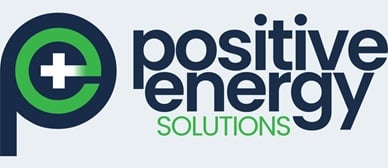

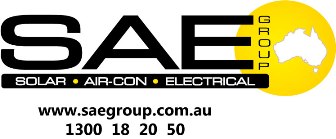

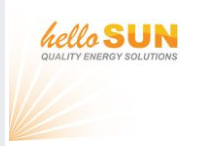
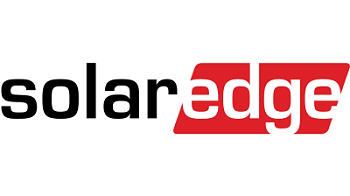

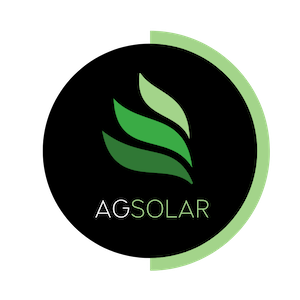
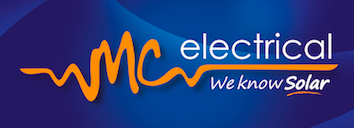

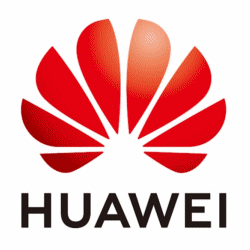

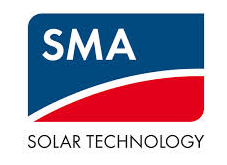
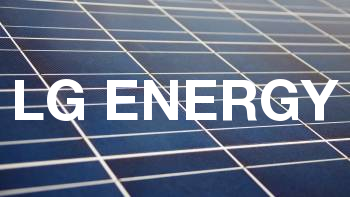
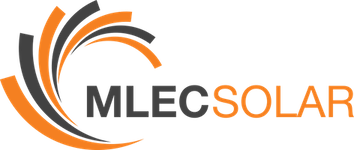
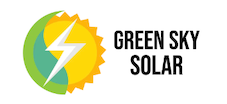

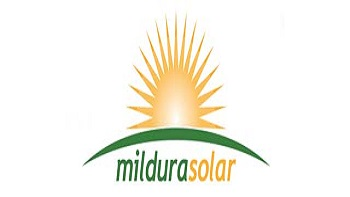

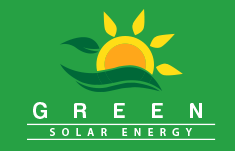
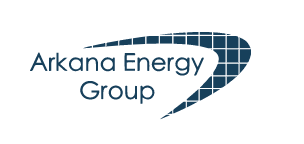



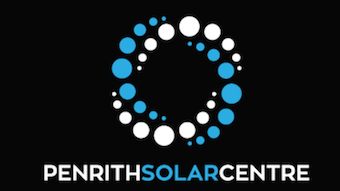

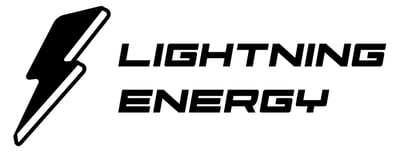
.jpg)


.png)